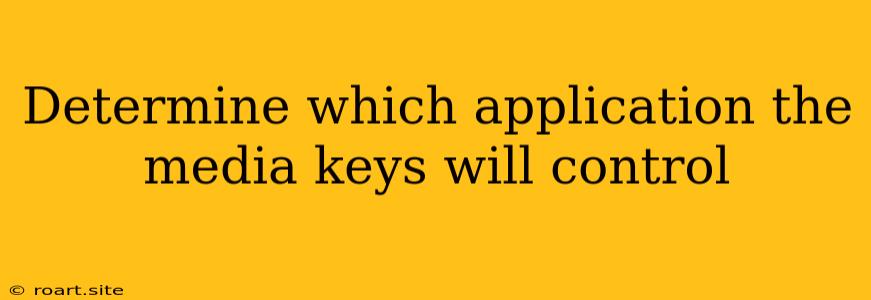Media keys, those handy buttons on your keyboard or external devices, offer a quick way to control your media playback. But have you ever encountered a situation where pressing the play/pause button doesn't do what you expect? This can be frustrating, especially when you're in the middle of enjoying your music or video. The culprit? The operating system might not be sending the media key commands to the application you intended. This article will explore how to determine which application the media keys will control and troubleshoot any conflicts that might arise.
Understanding Media Key Functionality
Media keys, often found on keyboards and multimedia devices, are designed to interact with media players and applications. They typically include buttons for play/pause, stop, next track, previous track, volume control, and mute. These keys send specific commands to the operating system, which then relays them to the active application.
How Operating Systems Handle Media Keys
Operating systems have built-in mechanisms for managing media key commands. When you press a media key, the operating system intercepts the signal and tries to determine which application should receive it. This usually involves looking at the currently active window or the application that was last interacted with.
The Issue of Application Conflicts
The issue arises when multiple applications are vying for control of the media keys. Imagine you're playing a video in your browser and have a music player running in the background. When you press the play/pause button, the operating system might send the command to the music player instead of the browser, leaving your video paused while the music resumes playing. This can be quite annoying and disrupt your workflow.
Determining Which Application Controls Media Keys
Here's a breakdown of how to determine which application the media keys will control on different operating systems:
Windows
- Check the System Tray: Look for an icon representing the application that is currently controlling the media keys. This icon might change when you press a media key.
- Use the Keyboard Settings: In the Windows Settings app, navigate to "Devices" > "Keyboard." Here, you might find options to control the behavior of media keys or to customize which application they control.
- Third-Party Software: Some third-party software, like Global Media Keys or MediaKeys, can be used to manage media key functionality and assign specific commands to different applications.
macOS
- Check the Menu Bar: Look for the icon of the application that is currently controlling the media keys in the macOS menu bar. Clicking on it will often reveal options related to media playback.
- Use the Keyboard Preferences: Open the Keyboard Preferences pane in System Preferences and look for the "Keyboard Shortcuts" tab. Here, you can see which applications are assigned to specific media keys and make adjustments.
- Third-Party Applications: There are also third-party macOS applications like Keyboard Maestro or BetterTouchTool that allow you to customize the behavior of media keys.
Linux
- Use the Command Line: In a terminal window, use the "xev" command to view the events generated by the keyboard. This can help you identify which application is receiving the media key commands.
- Check the Desktop Environment Settings: Different desktop environments like GNOME and KDE have settings panels where you might find options related to media key behavior.
- Third-Party Applications: Linux users can also use third-party tools like "MediaKeys" or "KeyBinder" to manage media key assignments.
Troubleshooting Media Key Conflicts
Once you've determined which application the media keys will control, you can troubleshoot any conflicts. Here are some general tips:
- Close Unnecessary Applications: If you're experiencing conflicts, try closing any applications you're not actively using, as this might free up the media key control.
- Use the Application's Own Controls: Some applications have built-in settings to manage media key behavior. Check the application's settings or preferences for options related to hotkeys or media controls.
- Reinstall or Update Drivers: If your media keys aren't working properly, try reinstalling or updating the drivers for your keyboard or multimedia device.
- Check for Software Updates: Ensure that both your operating system and the applications you're using are up-to-date. Software updates often include bug fixes and improvements to media key functionality.
Tips for Managing Media Keys Effectively
- Assign Media Keys to Specific Applications: If you frequently use certain applications for media playback, you can assign media keys to those specific applications. This can be done through operating system settings or third-party software.
- Use a Dedicated Media Remote: Consider using a dedicated media remote for controlling your media playback, especially if you find yourself frequently switching between different applications.
- Take Advantage of Third-Party Tools: If you're struggling with media key conflicts or want more control over media key behavior, explore third-party tools that can help you manage media key assignments and preferences.
Conclusion
By understanding how to determine which application the media keys will control, you can overcome conflicts and streamline your media playback experience. Whether you're a casual user or a power user, knowing how to troubleshoot and customize media key behavior can make your computing life much easier. Remember to use your operating system settings, check for application-specific preferences, and consider using third-party tools to gain complete control over your media keys.
